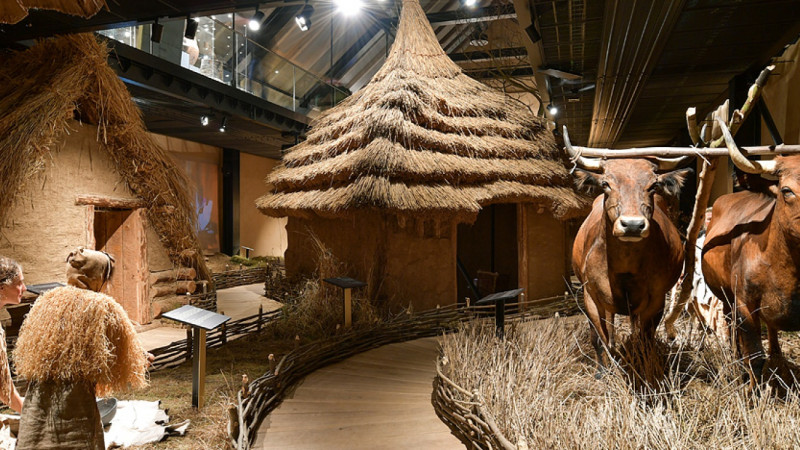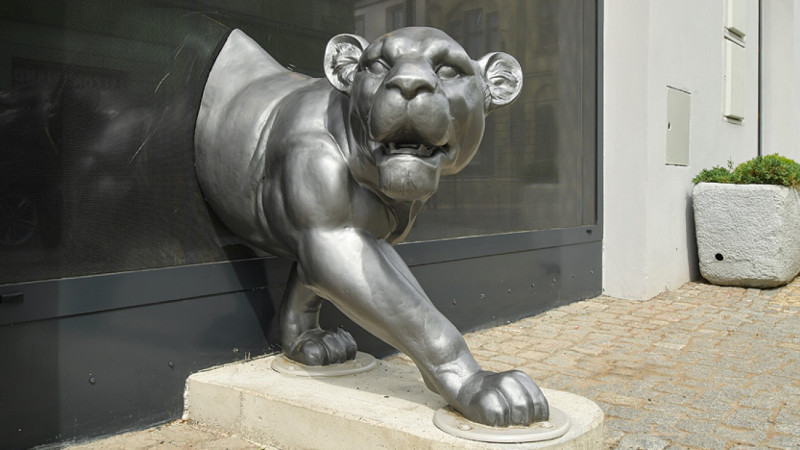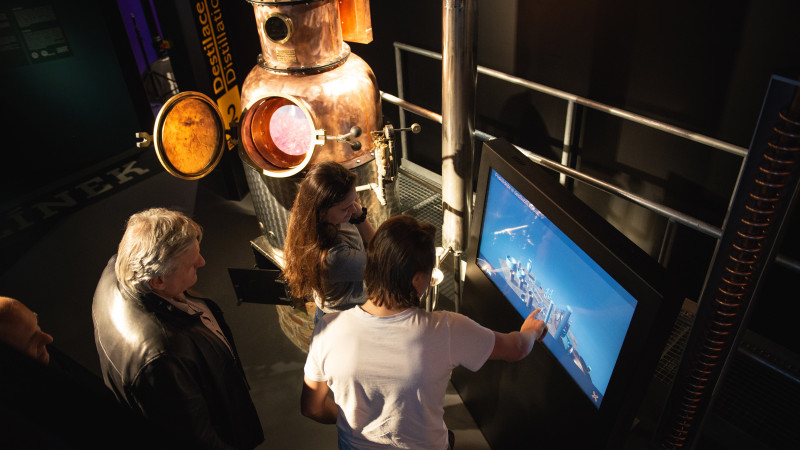
The Great Moravia Memorial
Cyril and Methodius Centre
The building of the Great Moravian Memorial was built over the foundations of the first discovered church building from the Great Moravian period. The extension added in 2022 includes new multimedia exhibitions on two floors. The story of Constantine and Methodius will introduce visitors to the life stories of these brothers who were at the beginning of Slavic writing, and the exhibition called Prehistory of the Uherské Hradiště Region will take visitors deeper into the past. The exhibition is designed as a dark haptic trail that will take the people back to the time of mammoth hunters, the first farmers or metal workers. As part of the original steel exhibit, the public can admire original archaeological finds collected by several generations of local archaeologists.
The story of Constantine and Methodius
The layout of the exhibition evokes an open book for the visitors to browse through. The “book” is then sort of illustrated by the font used and the illustrations on the walls. Upon entering the exhibition, visitors will be attracted by a large-screen projection that tells the story of the origins of Christianity in our territory in an interesting and engaging way, taking visitors back to the time when the important Slavic missionaries Constantine and Methodius came to Great Moravia to bring their religious belief. On the opposite wall, there is a replicated fresco, which is the first depiction of their disciples, called Sedmipočetníci (meaning: seven in number).
Pagan cult place
In the middle of the exposition there is a pagan cult site. It is a nest in which a special audio-visual show evoking a storm takes place. Visitors are surrounded by ubiquitous lightning, thunder and rain. The lighting effects change, the sound graduates and the overall mood of the space changes at any given moment.
Byzantine Empire
The next stop shows the story of Constantine and Methodius in the Byzantine Empire. The visitor is allowed to choose among 18 stops that map their journey to Great Moravia. This is an interactive and educational stop, which will be especially appreciated by school groups who can learn more about the theme of Great Moravia in a funny and playful way. The audio-visual exhibit combines a multi projection with an interactive graphic panel (IGP). On the IGP, visitors can choose the place that interests them. On the projector in front of them, the path along which Constantine and Methodius travelled is shown, and a text description, video and place marker are displayed for the site. Everything is plotted in the original map.
Macedonia
The visitor's next steps are directed to Macedonia. We find ourselves in the chapel where Saint Naum, a disciple of Constantine and Methodius, was buried. Founded in the late 9th century by Saint Naum, this monastery became an educational and cultural centre. The original church, which had been built by St. Naum, was destroyed during the Ottoman rule and a new church was built in its place in the 16th century. The building with the Byzantine features boasts rich fresco decorations that surround visitors from all around. There is a legend attached to the place which tells that if you put your ear to the grave of Saint Naum, which is located inside, you can supposedly still hear the beating of Naum's heart.
Prehistory of the Uherské Hradiště region
The exhibition called the Prehistory of Uherské Hradiště Region differs significantly from The Story of Constantine and Methodius. It is an artefact haptic trail that reveals the prehistory to visitors and at the same time presents the archaeological collection of the Slovácké Museum.
Visitors embark on a journey to discover the earliest history of the Uherské Hradiště region against the backdrop of the Morava River. The space works with only a minimum of light. The construction of the exhibition walls is made of raw dark metal plates. You are encouraged to touch the objects in this exhibition. The haptic trail works with controlled light, revealing individual exhibits and inviting visitors to touch the artefacts and discover their beauty. After visitors get to know each artefact, they walk through the different periods, which are presented to visitors not only through the artefacts but also using audio-visual effects. The exhibition offers extensive databases processed for individual periods, in which visitors can research our history, test their knowledge using quizzes and games, get acquainted with the replica of the costume of a feudal lady from the Hallstatt period on the basis of the discovery of the Bánov treasure and take a look at the replicas of mammoth bones. A video mapping on a model map will then depict all the periods the exhibition focuses on.



















